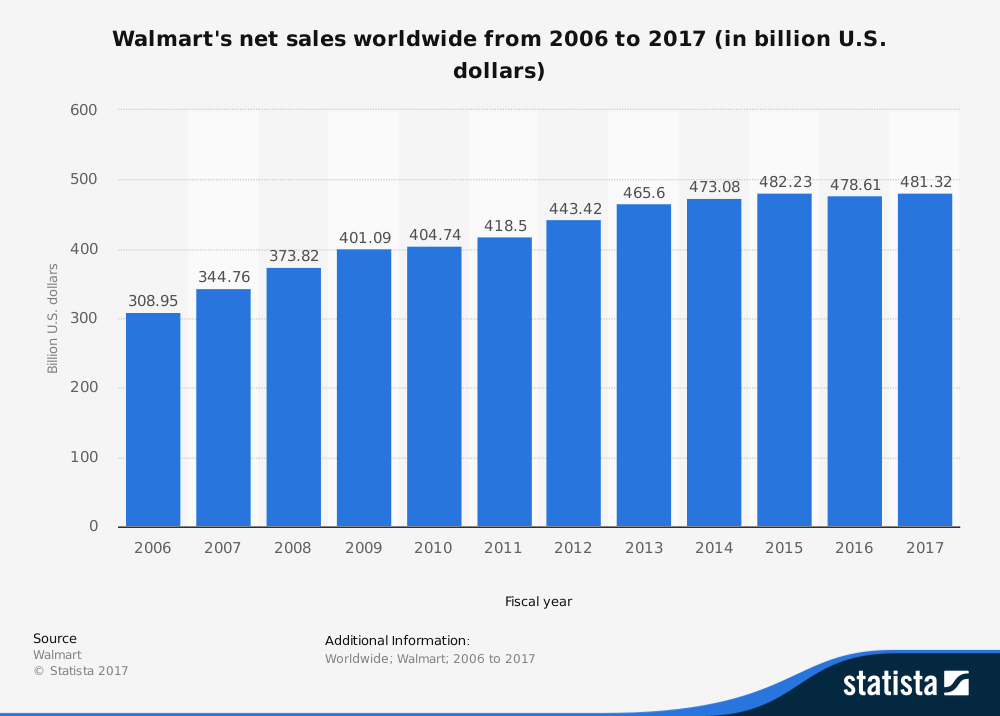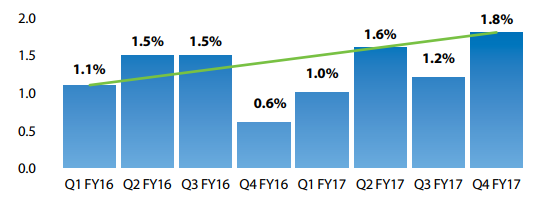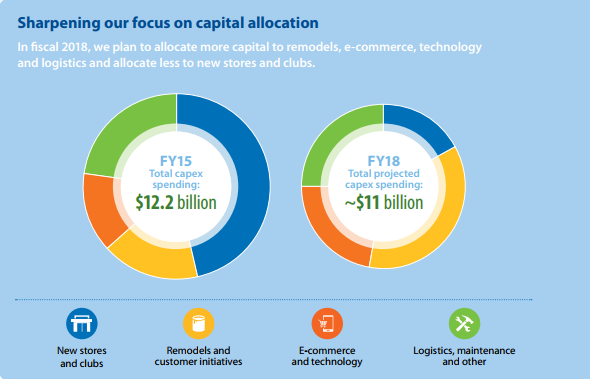Introduction
Marketing has become a core management practice as firms struggle to manage stiff competition and other challenges within the external environment. In the past, most of the large multinational corporations did not consider marketing as critical as it is in the current business environment because of limited competition. However, that has changed as new firms emerge with superior products and unique marketing strategies. Marketing analytics has become one of the most important tools that marketing managers are currently using to strengthen the brands of their companies and to promote products among the targeted customers. According to McDonald and Kolsaker (2014, p. 65), “marketing analytics refers to the art of measuring, managing and analyzing marketing a marketing strategy to maximize its effectiveness and optimize return on investment.” It goes beyond promoting sales and strengthening a brand in the market.
Marketing analytics enables a firm to understand the tastes and preferences of its customers in the market. It makes it possible for a firm to understand the changing market trends in a way that makes it possible to redesign products and sometimes the brand as a way of maintaining loyalty. The tool makes it possible for a firm to measure the level of returns to the investment put in advertising and other marketing activities. Marr (2017) notes that it is unfortunate that marketing analytics is not yet popular among various companies around the world, including some multinational companies which have been in the global market for decades. In this paper, the researcher will analyze marketing strategies used by Wal-Mart and determine the level to which it applies marketing analytics with the view of making recommendations on how this concept should be applied at the firm.
Wal-Mart
Wal-Mart is a leading multinational retail corporation founded in 1962 by Sam Walton (Sweetwood, 2016). Its effective management and marketing strategies enabled it to become the world’s largest retail store. With its headquarters at Bentonville, Arkansas, Wal-Mart currently operates in Canada, Mexico, Central America, Argentina, Brazil, Chile, China, United Kingdom, India, and Japan, besides the numerous outlets in the United States. According to Sweetwood (2016), Wal-Mart is currently the largest company in the world in terms of revenue, approximated by Forbs to be US$ 485 billion (Anders, 2013). It is interesting to note that the company has held the position for the last four consecutive years and a record 12 times since 1995.
It is a sign of the effective marketing strategies that this company has been using to ensure that it understands and meets market needs in the best way possible. Most of its revenues come from its operations in the United States where it has numerous retail outlets across the country. However, the firm has been registering improved revenues from its overseas outlets. In most of the international markets, the company has always opted to acquire existing local firms as a way of making seamless market entry. The current chairman of the company is Greg Penner. Doug McMillon is its president and chief executive officer with Brett Biggs holding the position of chief financial officer. Currently, the position of chief marketing officer at the firm is held by Tony Rogers. He was the company’s chief marketing officer in China.
Wal-Mart’ Latest Annual Report
Marketing analytics helps in determining whether the investment that a firm is making in its marketing strategies is yielding the desired financial returns. A strategy can only be considered effective if translates to improved sales for the company. It is important to look at the annual report of Wal-Mart as a way of determining if the current marketing strategies are making the desired impact on the company’s success. Conducting a comparative analysis makes it possible to determine if the company is making proper progress in revenue generation or not (Kennedy & Walsh-Phillips, 2015). Figure 1 below shows the company’s net sales in the global market from 2006 to 2017.

The statistics show that the company registered a consistent increase in its revenue, from 2006 to 2017. It is important to note that the company was able to overcome the global economic recession of 2008 that affected numerous companies in the United States and across the world. It is an indication that the firm was able to understand the needs of its customers during that tough economic period and provided them with what they needed most, resulting in revenue growth. However, one cannot ignore the drop that was witnessed in 2016. The trend can be explained by a report that was released by the top management of this firm that explained the challenges that the firm was experiencing in Canada, Brazil, and some parts of the United States. The firm considered closing some of its shops in that year because of the reduced profitability. However, the upward was witnessed in 2017. The firm is making impressive recovery from problems that were witnessed in 2016. Figure 2 below shows how steady the comparable sales have been improving at the company.

The statistics show that although there were challenges within the year, there was an overall improvement in sales in the year 2017. The sales revenue of this company can be explained in greater detail through the company’s income statement. The table below is a summary of the income statement of Wal-Mart for the last three years, from 2015 to 2017.
Income Statement
Table 1. Wal-Mart’s income statement (Yahoo Finance, 2018, para 1).
The income statement supports the explanation of the firm’s management unit that 2016 was a challenging year for this company. It registered a drop in revenue compared with the income of the previous year. However, the company recovered in 2017. A statistical analysis of the statement shows that the cost of revenue dropped from 2015 to 2016. The gross profit within the last three years has been on the rise consistently despite the challenges faced in 2016. However, the net income within the same period has registered a consistent drop.
Wal-Mart’ Business Strategies
Wal-Mart’s latest annual report indicates that the firm, just like many other companies in the United States and Around the World, has been experiencing several challenges in the market over the recent past. Despite these challenges, it has maintained its top position as the largest company in the world in terms of revenue. It means that there are a serious of right strategies and decisions that the company has been making over that period, leading to such levels of success. It is important to understand the firm’s business strategy and how it has enabled the firm to overcome stiff market competition and other challenges. The business strategy of Wal-Mart is based on its philosophy of ‘everyday low prices’ (Sweetwood, 2016). It is a clear indication that its primary strategy is cost leadership. Over the years, the company has been streamlining its operations to minimize costs of operation as much as possible. The focus is to cut down the costs as much as possible with the goal of making its prices lower than the market average. The strategy has worked, making it possible for it to charge the lowest prices possible in the market. The company recently announced its intention of reducing the size of its workforce because of the need to have a lean workforce (Marr, 2017). The decision was made to cut down the expenses of the firm further to help in improving its profitability.
The company has been keen on modifying its products and products’ delivery methods in line with emerging technologies. A traditional brick-and-mortar company that excelled in identifying strategic locations in cities and urban centers, the firm realized that it can no longer ignore the online market platform. According to Sweetwood (2016), Wal-Mart is currently one of the leading online retail stores in the United States. To understand the business strategy of this entity, it is important to look at its main areas of investment or planned investment. Figure 3 below helps in breaking down these expenses.

The figure identifies the main areas of expenses in strategic moves that this company makes to achieve the desired result in the market. It is important to look at each of these areas and the reasons why they were given the level of significance as shown in the figure above.
New Stores and Clubs
According to the business plans laid by the management of Wal-Mart, new stores and clubs accounted for almost half of the $ 12.2 billion expenses for the year 2015. The management had set in motion a plan that will enable it to open new stores in strategic cities around the world. The online marketplace is rapidly growing in relevance. However, the management of this firm is convinced that more people still prefer visiting brick-and-mortar stores, especially during the weekends and holidays. People want to inspect items they are purchasing physically before they can leave the store. Some of the negative experiences that online shoppers have had, especially cases where they receive defective or different products from what they ordered, have forced many to move back to making their purchases in physical stores. Marr (2017) also notes that there is nothing that can replace the pleasant experience of parents visiting retail outlets with their children and allowing them to pick items they want or play in the parks that these facilities now have as they try to bond. The desire for outdoor experience makes it impossible to eliminate physical retail stores. That is why the company had considered making a significant investment in opening up new stores in the country and other cities around the world. The strategy was expected to increase the earnings of this company. In 2018, the budget for new stores and clubs was reduced by more than half what it was in 2015.
Remodels and Customer Initiatives
Wal-Mart has been in operation for over the last five decades ago. Some of its retail stores were designed and constructed over twenty years ago. Basic renovations have been done in some of these facilities, but they fail to meet the current standards of a modern shopping mall (Sweetwood, 2016). In 2015, the greater focus was on constructing new stores/clubs and remodeling, with a greater emphasis put on the creation of new facilities. The business approach remained the same in 2018, only that more emphasis was placed on remodeling. It is an indication that Wal-Mart is still convinced that the brick-and-mortar market still has great potential in the market. The company is currently remodeling some of its old retail stores to reflect the new standards as desired by their clients. Some of these stores have theme parks and children entertainment areas. While parents relax in the clubs, children can play in the parks.
The approach shows a shift in the strategy of attracting customers. The firm is changing the shopping experience completely. It is now becoming fun to shop at Wal-Mart. Customers who visit this retailer get more than just the products they want to purchase from the store. They offer an experience that cannot be available in the online market. Sweetwood (2016) defines this as pulling customers from the comfort of online purchases to be physically present at these stores. Children may not be the decision-makers in the entire shopping experience. However, they are very strong influencers. With that knowledge, Wal-Mart offers these children unique entertainment and fun that will make them force their parents to revisit the stores. Shopping, therefore, becomes a fun-filled experience for all members of the family. The company has come up with several customer initiatives to further attract their customers. Loyalty cards, coupons, and unique after-sale services that it offers to attract customers and wins their loyalty. They are made to believe that the firm has their interest at heart.
E-commerce and Technology
The management of Wal-Mart has come to appreciate the significance of e-commerce. Although the business model of this firm primarily focuses on the brick-and-mortar business model, the firm understands that it cannot ignore the growing size of the e-market. In 2015, the firm’s investment in commerce and technology was less than 40% that spent in putting up new stores and clubs. However, the latest report from the firm indicates that the approach has changed significantly in 2018. The firm will be spending more on e-commerce and technology than on putting up new stores. It has down on the management that the potential in this new business platform is continuously growing, making it necessary to invest more in it.
The firm currently has a website where its online customers can identify their desired products and make payments online before the product can be delivered into the desired location. It has partnered with online money transfer companies such as Visa and MasterCard to facilitate safe online payment (Kennedy & Walsh-Phillips, 2015). It has also developed its own Wal-Mart Credit Card and Money Card to ease its customer’s online transactions. Although it is meeting stiff competition in this platform from the pioneer online retailer, Amazon.com, and it’s arch-rival e-bay, Wal-Mart is making impressive progress in the online market. In the United States, Wal-Mart is the third-largest online retailer. However, its sales represent only 3% of the market’s total, compared with Amazon’s 70%. It means that more still needs to be done to increase the firm’s sales in the online platform.
Logistics/Product Delivery
A significant amount of planned expenses this year will go towards facilitating logistics within the company. It is important to note that the logistics also include making delivery of products purchased in the online platforms, besides stocking all the physical retail outlets. The company is investing in small vans that are used in making deliveries within various cities where it offers online retail services.
Key Marketing Actions Wal-Mart Has Taken to Support its Business Strategy
Wal-Mart has become the market leader and a master in the retail market. Despite the challenges and changes that take place in this industry, the company has always found ways of remaining at the top. Analyzing key market actions at this firm will bring to fore reasons why it has remained a successful company in the retail industry (Marr, 2017). In this section, the focus will be to identify and discuss these key marketing actions taken to support the firm’s business strategy.
Marketing Research
Market forces keep changing and a firm must understand these changes and act upon them accordingly and within the right time. McDonald and Kolsaker (2014) argue that most successful multinational corporations often conduct their marketing research in great secrecy. They gather information about the emerging trends, changing tastes and preferences, market gaps, the increasing or decreasing intensity of market competition, the economic growth, increasing or decreasing population within a given area, and many other important facts relevant to their products. Wal-Mart is no different. It is rare for the company to publish the activities of its marketing research department. However, it has a fully funded unit that collects information in the market. It also has one of the most elaborate customer-feedback platforms in the retail industry.
In its commercial website, customers can contact the representatives of the firm and register their satisfaction or lack of it based on products purchased from the firm’s online or physical stores. The information collected from the customers is an important guide about how the company should design its products or product delivery. Sweetwood (2016) observes that the firm has also been engaged in scientific research about global warming and climate change. Climate change is currently becoming a major social concern and customers often want to know what leading multinational companies are doing to reverse the trend. Wal-Mart is currently working on ways of improving its packaging to ensure that the materials used pose minimal threat to the environment.
New Product Development
New product development is one of the most effective ways of increasing revenues without having to consider exploring new markets overseas (Sweetwood, 2016). Wal-Mart has used this strategy to ensure that it offers customers a wide range of products on different platforms. The company started as a retail store. As the company continued to grow, it started to diversify its investment as a way of increasing its revenue. The first initiative taken by the company to come up with new products needed in the market was the establishment of Sam’s Club. The company realized that a section of the market was not fully covered with its current products. Marr (2017) notes that some of the small scale retailers were coming to Wal-Mart’s supermarket to purchase goods in bulk for their shops. The company developed the club for these clients. At the club, the company acted as a wholesaler for these small traders. It lowered its prices further for these traders who purchased products in bulk. The initiative was a huge success. The company has also initiated a series of other new products, some of which have been successful while a few others have failed.
In 2006, the company came up with an initiative of selling generic drugs. It partnered with Indian drug manufacturers (Cipla and Ranbaxy) to supply with quality drugs at low prices. While most of the name-brand drugs cost about $ 102 per prescription, Wal-Mart charges $ 29% per prescription. It meant that its prescription drugs were over 70% cheaper than the market average. The offer was very attractive to middle-class Americans. In early 2007, the firm launched a movie download service known as beta (Armstrong, Adam, Denize, & Kotler, 2014). The program did not register the expected results and it was discontinued in the same year. One of the most successful new products for Wal-Mart is Vudu, an online movie service (Copeland & Labuski, 2013). It is currently one of the most popular movie services on the online platform. The firm has been exploring other opportunities in the entertainment market.
Brand Development Strategy
Brand development is another critical activity that defines how successful a firm can be in the market. Wal-Mart is currently the largest company in terms of revenue generated per year. However, it has failed to appear in the world’s top 20 most valuable brands over the past four years. It means that although the sales are relatively high, the company’s brand is less valuable when compared with top brands such as Google, Apple Inc., and Coca Cola. Figure 4 below shows the firm’s brand logo and the motor it uses.

One factor that is evident from the brand image of this firm is simplicity. Coca Cola, Apple, and Microsoft have made an effort to design a unique logo, something that is missing at that of Wal-Mart. Perhaps one of the greatest undoing for Wal-Mart in building a highly valuable brand in the market is its overemphasis on low-cost. It promises its clients that when they visit the facility, they will save money and lead a better life free from financial burden. Anders (2013) argues that it is human nature to want to associate with the best and most valuable things. Everyone wants to appear to be of a higher class even if he or she is not very rich. That is why Apple Inc, a brand positioned to be of the highest value in the electronic market, is one of the most valuable brands. Not everyone can afford to purchase a brand new iPhone X in the United States. Personal computers are also very expensive. Even though its products are highly-priced, it is one of the most valued brands in the world. It is admired by many people. Coca Cola brand has also performed well in the market although its products are cheap. This may be because instead of focusing on the low prices of its products, the company focuses on the unique experience it offers.
It is necessary to note that the high value of a brand does not translate into high sales. Wal-Mart, with its brand, valued lower than many American companies, is making the highest sales in the country. The company may have designed its brand, not to be admired or loved by many, but to be considered reliable. As such, many may not be very proud of walking into a Wal-Mart store. However, they will always do so knowing that they are cutting the costs of their expenses. The company makes an emotional appeal to its customers on the need to save whenever they are making their purchases.
Promotion Strategies
Once a company has made its products conveniently available for its customers, McDonald and Kolsaker (2014) believe that one of the most important activities is to engage in promotional campaigns. As a firm that has embraced the cost-leadership strategy, most of the promotional campaigns that Wal-Mart embraces focus on the unique prices it offers to its customers. In most of its promotional campaigns, the shelf-prices of its most moving products are shown, especially if there is any slight drop. The figure below shows one of the common images of the promotional approach that the company uses.

Distribution
In the retail industry, distribution is one of the critical factors that define the level of success of a firm. A firm must ensure that its products are available to its customers at the right time, in the right quantity, and at the expected place. Once Wal-Mart receives products from suppliers, it uses its vans and trucks to deliver them to various retail stores strategically located in cities, town centers, and other areas where customers can access them. It has invested in its logistics department to ensure that the movement of its products to the customers is facilitated. Most of the small vans are used to deliver products purchased by clients on the online platform. On the other hand, large trucks help in distributing products to various outlets or delivering goods to bulk buyers. The figure below shows one of the common trucks used in distribution by this company.

Price Strategy
The pricing strategy of Wal-Mart is one of its most distinguishing features in the market. As explained above, the company has embraced the cost-leadership strategy as one of the ways of attracting customers to its stores. Its prices are always lower than the market average. To ensure that it remains profitable while charging such low prices, the company has been keen on its sourcing strategy. It has been identifying suppliers from all over the world that can deliver products at the lowest prices possible. For instance, the company avoided local pharmaceutical companies and sources for prescription drugs from Indian firms. The approach has enabled it to price some of these drugs at less than half what other firms charge. The company is always keen to ensure that as it attracts more customers, care should be taken to ensure that it remains profitable.
Metrics Used to Measure the Performance of Business Strategy
McDonald and Kolsaker (2014) observe that once a company has identified a strategy that it plans to implement to achieve specific goals, a considerable amount of investment is often made to ensure that the set activities are conducted and completed within desirable time. Therefore, it is imperative to measure the performance of such business strategies to determine whether they are effective or not. If they are effective, then they may justify increased investment into them. If they are not, then they should be terminated and other better alternatives developed. Various metrics exist that can be used to measure the performance of a business strategy. One of the most common metrics is profitability. Once a firm embraces a given strategy, it is important to ensure that it directly leads to higher profitability than was the case before embracing it. Cost is another important metric. A new strategy is expected to be more efficient and capable of generating greater profits than other existing strategies. Some strategies are designed to increase sales. When sales are the metric for the strategy, then the rate of stock turnover should be higher when the strategy is embraced. Customer satisfaction and retention is another metric. Some strategies are employed to ensure that customers are highly satisfied so that they can remain loyal to the firm. The section below discusses the marketing metrics that Wal-Mart uses to measure its performance.
Marketing Metrics That Wal-Mart Uses to Measure its Performance
Wal-Mart is keen on ensuring that the strategy it uses yields the desired results. It has come up with metrics to enable it to measure its performance in the market. The metrics can broadly be classified into the following two categories:
Metrics in the Brick-and-Mortar Stores
The first category is the metrics used in measuring the performance of the firm in the brick-and-mortar market. Most of the revenues of this company are generated from sales made in the physical stores. The firm uses the following metrics to measure the performance of strategies used in its physical stores:
- Cost of operations. It is always in the interest of the company to ensure that its strategies help in cutting the cost of operation. In this metric, the company always looks at how well the strategy embraced reduces the cost of doing business.
- Sales revenue. Sales revenue is one of the most important metrics. At the end of every financial year, the firm looks at how well the new strategies have helped in improving sales.
- Net profit. The ultimate goal of having new strategies is to increase net profit, hence it is necessary to measure how well the new strategies made that possible.
- Cost of customer acquisition. Attracting and retaining customers is at the core of marketing strategies. This measure helps in determining how it can be done at the lowest cost possible.
- Several customers served. Each year, the company strives to increase the total number of customers purchasing items from its stores. This metrics helps in that measurement.
- Customer retention rates. These metrics help in determining how well this company’s marketing strategies have enabled it to retain a pool of loyal customers.
Metrics in the Online Marketing Platform
Wal-Mart has also made an emphatic entry into the online retail market, especially within the United States. It has a set of metrics that it uses to measure the performance of strategies it uses in this platform, and they include the following:
- Total visits. The metric is used to determine how effective marketing strategies used by the firm are in attracting online visitors to the company’s commercial website.
- New sessions. Out of the total visits, these metrics enables the company to determine the number of online visitors coming to the website for the first time irrespective of their decision to make a purchase or not.
- Total conversions. The metrics are used to measure the level of profitability of the strategies used in the online market in terms of how many of the visitors make purchases.
- Bounce rate. The metric enables the company to determine the number of those who quickly leave the website without further exploration. It is a sign of a complete lack of interest on the website.
Portfolio of Metrics Used By Wal-Mart and Their Significance
It is clear from the above analysis that Wal-Mart has a large portfolio of metrics that it uses to measure its performance at various platforms. The metrics are important in defining whether the strategy being embraced is effective in meeting the goals set by the management or not. In the first category of the metrics, the company can determine if each of the strategies it is using to promote sales in the physical stores is effective enough. The same approach is used in the metrics for online retail marketing strategies. When it is determined that any strategy is ineffective, then it is often eliminated to ensure that only those capable of yielding the desired outcome are financed.
The Applicability of the Metrics at Wal-Mart
Wal-Mart is actively using all of the above metrics in determining the level of success of the strategies it used in the market. According to Flint, Hoyt, and Swift (2014), it is common for Wal-Mart to pull out of initiatives that it initially supported after realizing that it cannot get the desired level of success from them. For instance, it started a new concept of a small grocery store known as Marketside in Phoenix, Arizona in 2008. After two years of operation, the firm closed down all these small grocery stores because of low profitability. On the other hand, the strategy of selling prescription drugs at relatively low prices has proven to be successful. Every time a strategy fails the test of time or profitability at this firm, it is eliminated and replaced with better ideas.
The Relationship among the Portfolio of Metric Used By the Company
The metrics used by Wal-Mart are closely related because they are all focused on enhancing the profitability and sustainability of the operations of this company. In the online platform, all the metrics are focused on achieving one thing, but at different stages. It starts by determining the total visits, and then it looks at how many of the total visitors are new. It goes on to determine the bounce rates before finally looking at the total conversions. In essence, the firm is trying to identify the loophole in the entire chain of customers’ online activities when they visit their website.
The Source of Data for Each Metrics in the Portfolio
As explained, each of the metrics helps in measuring the level of success of the strategies used by the company in the market. The company uses Google Analytics to obtain data for all the online metrics in the portfolio. The software can determine the number of total visits, the length of time a customer spent on the website and the activities he or she was engaged with, and whether or not they made a purchase. The tool also helps in determining the bounce rate and new sessions on the website. The data for metrics used in the physical stores are collected from the customers, sales representatives, and financial statements of the company. The statistics about costs, revenue, and profit are readily available in the financial documents of the company.
Subjective Metrics and Those Which Quantify the Outcome for Business Decisions
It is important to note that some of the metrics discussed above are subjective. For instance, the bounce rate is subjective metrics. Sometimes one may not stay for long in a website because of internet connectivity issues, the problem with the personal computer or the tablet being used, or a host of numerous other reasons. Concluding that such a customer was not interested in touring the company’s online store is subjective. Total visits and new sessions are also relatively subjective. This is so because sometimes visitors are directed to the website by traffic. It may not necessarily mean that every online visitor coming to the website is interested in making purchases (Chakraborty, Pagolu, & Garla, 2013). However, most of the metrics quantify the outcome of business decisions, including new conversions, cost of operations, sales revenue, net profit, cost of customer acquisition, number of customers served, and customer retention rates. They can be traced directly to financial outcomes in the company.
Business and Marketing Decisions That Are Impacted By the Portfolio of Measure
The portfolio of measures discussed above has a significant impact on various business and marketing decisions made by the company. The online marketing metrics have a profound impact on the online marketing strategies used by this firm. They inform the company whether the strategies it is employing to market its online stores are yielding results and what changes are needed. If the strategies are effective, the management will be motivated to invest more in those marketing strategies. Most of the metrics used in measuring strategies of physical stores also help in making business decisions such as when to make an acquisition or what areas of the market should be avoided.
Recommendation
Wal-Mart’s performance in the retail market is impressive. It has registered excellent performance over the past decades, making it the largest company in the world in terms of revenue. However, it should consider the following recommendations to improve its performance further:
- The company should increase its investment in the online retail market to improve its market share from the current 5.8% to a higher percentage.
- The firm needs to take its employees through regular training to improve their overall performance.
- The management should invest more in emerging technologies to enable it to improve its customer retention rate.
References
Anders, J. (2013). Coca-Cola’s marketing strategy: An analysis of price, product and communication. New York, NY: GRIN Verlag.
Armstrong, G., Adam, S., Denize, S., & Kotler, P. (2014). Principles of marketing. Sydney, Australia: Pearson Education Australia.
Chakraborty, G., Pagolu, M., & Garla, S. (2013). Text mining and analysis: Practical methods, examples, and case studies using SAS. Cary, NC: SAS Institute.
Copeland, N., & Labuski, C. (2013). The world of Wal-Mart: Discounting the American dream. New York, NY: Routledge.
Flint, D. J., Hoyt, C., & Swift, N. (2014). Shopper marketing: Profiting from the place where suppliers, brand manufacturers, and retailers connect. Upper Saddle River, NJ: Pearson Education.
Kennedy, D., & Walsh-Phillips, K. (2015). No B.S. guide to direct response social media marketing. Irvine, CA: Entrepreneur Press.
Marr, B. (2017). Big data in practice: How 45 successful companies used big data analytics to deliver extraordinary results. Chichester, UK: Wiley.
McDonald, M., & Kolsaker, A. (2014). MBA marketing. New York, New York, NY: Palgrave Macmillan.
Sweetwood, A. (2016). The analytical marketer: How to transform your marketing organization. Boston, MA: Harvard Business Review Press.
Yahoo Finance. (2018). Walmart Inc. income statement. Web.
